Before defining any Inventory Organization, we need to have a Master Inventory Organization which acts as a central repository for items.
Define Organization Parameters
1. Inventory Parameters
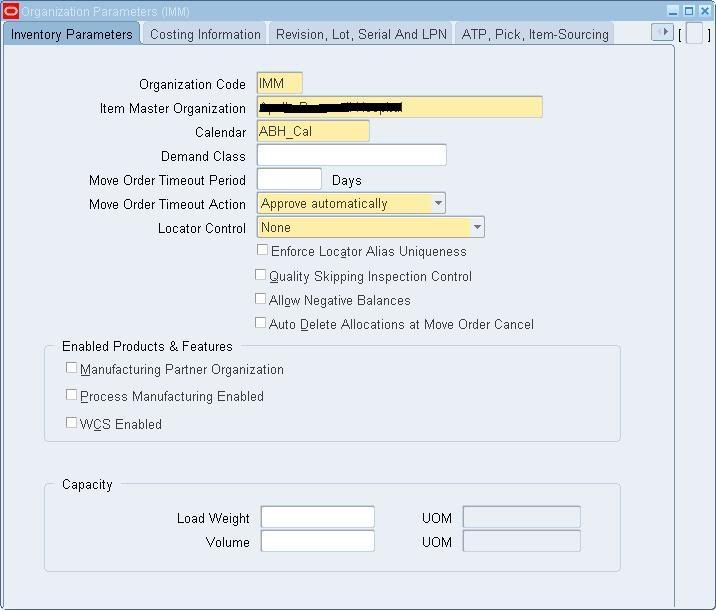
Inventory Parameters
We need to attach the Master Organization in the Organization parameters. Attach the Inventory Calendar.
Refer to document ‘Define Inventory Calendar‘.
Configure the Inventory Parameters including locator control.
2. Costing Information

Costing Information
Choose the appropriate ‘Costing Method’ (FIFO, Standard, Average). Specify whether to Transfer to GL.
Input the valuation Accounts.
3. Revision, Lot, Serial and LPN
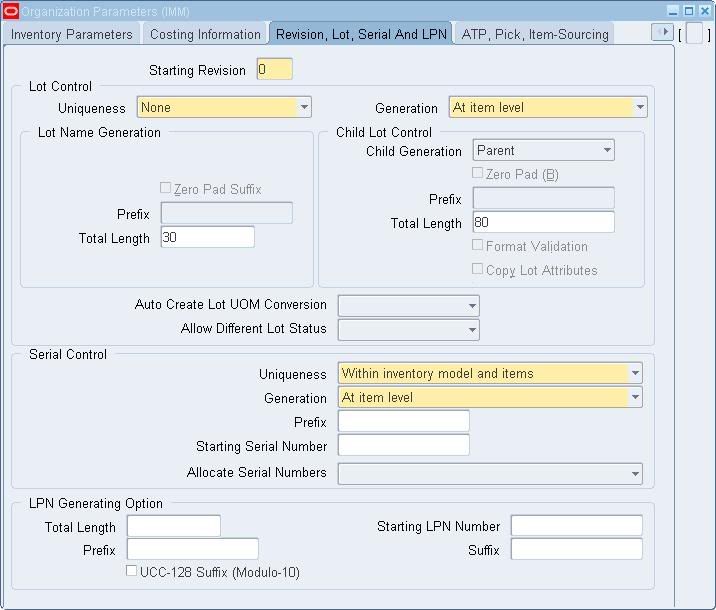
Revision, Lot, Serial and LPN
4. ATP, Pick, Item-Sourcing
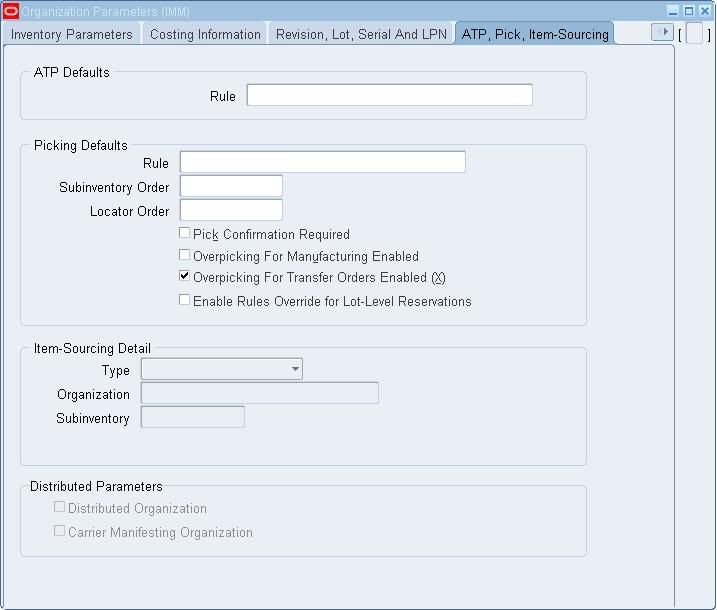
ATP, Pick, Item-Sourcing
5. Inter-Org Information

Inter-Org Information
6. Other Accounts
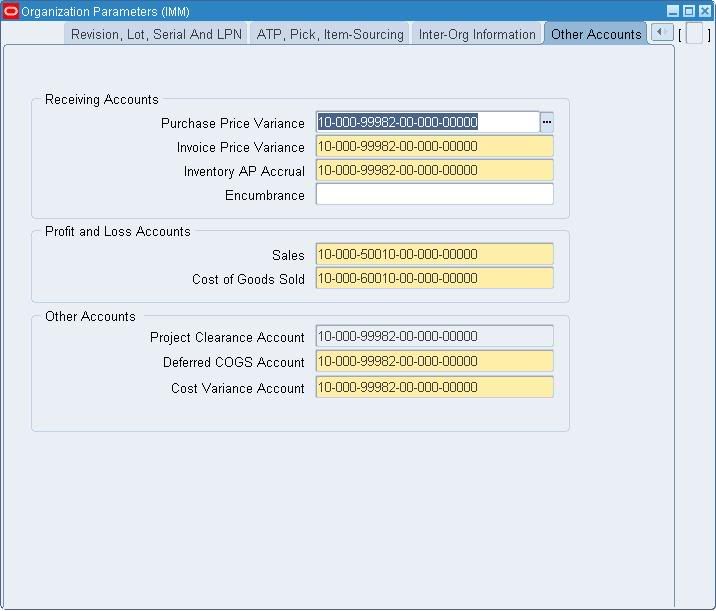
Other Accounts
Specify the following Accounts:
- Receiving Accounts
- Profit and Loss Accounts
- Other Accounts
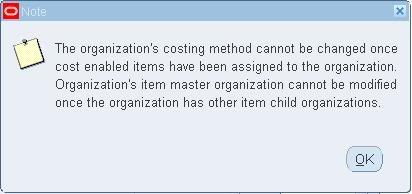
Note-Costing Method

0 comments